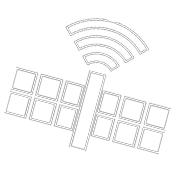- Active remote sensing techniques
LIDAR - (Light Detection And Ranging) is an optical remote sensing technology that measures properties of scattered light to find range and/or other information of a distant target. The prevalent method to determine distance to an object or surface is to use laser pulses. Like the similar radar technology, which uses radio waves, the range to an object is determined by measuring the time delay between transmission of a pulse and detection of the reflected signal.
- Elastic backscatter lidar
- Raman inelastic lidar
- Depolarization lidar
Ceilometer - An automatic, active, remote-sensing instrument for detecting the presence of clouds overhead and measuring the height of their bases. For optically thin clouds, such as most cirrus, more than one layer may be detected, but when optically thick clouds, such as liquid water stratus, are present, the light beam is unlikely to penetrate much beyond the base of the lowest liquid layer. Laser ceilometers use intense pulses of light in a very narrowly collimated, vertically directed beam, and have collocated transmitter and receiver systems. The cloud base heights may be displayed in a variety of time-height section images or backscatter intensity profile plots. Some older ceilometers use separated transmitter and receiver units. The instruments are designed to work during the day or night.
Sodar - An acoustic radar (sodar) that can determine radial velocity (velocity toward or away from the sodar) of the air by measuring the frequency shift of the returning sound waves that were scattered from regions of turbulent fluctuations of air temperature, compared to the original transmitted frequency. Velocities within individual surface-layer plumes and the bottom of convective thermals can be measured. Most sodar signals are blown away in strong winds, and the sodar also requires acoustic shielding from outside noise such as from roads, towns, and rustling tree leaves.
Differential Optical Absorption Spectrometry (DOAS)
Coming up soon!
Near Dispersive Infrared Radiometry (NDIR)
Coming up soon!
